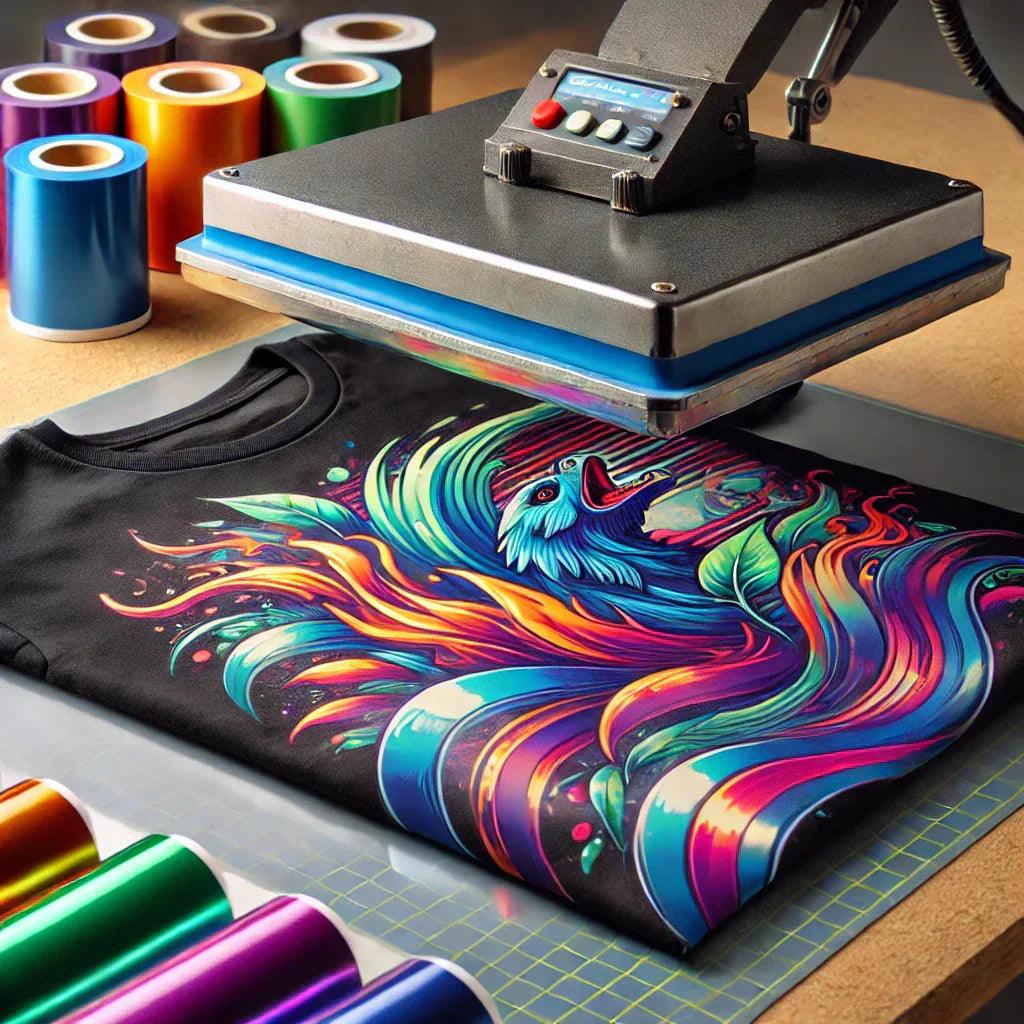
Orders 45$ & Up,
2-3 Days*
Orders 45$ & Up,
2-3 Business Days

Heat Transfer Vinyl (HTV) printing is a versatile method for customizing both apparel and accessories like koozies. While it offers numerous benefits, it's essential to understand its advantages and limitations to determine its suitability for your specific projects.
Pros of HTV Printing on Apparel and Koozies
Versatility Across Materials: HTV can be applied to a wide range of fabrics, including cotton, polyester, blends, and even materials like neoprene and polyurethane foam, commonly used for koozies. This flexibility allows for consistent customization across different products.
Ideal for Small Batches and Personalization: HTV is perfect for small orders or personalized items. Whether you're customizing a single T-shirt or a batch of koozies for an event, HTV allows for cost-effective production without extensive setup.
Durability: When properly applied, HTV designs are durable and can withstand regular use and washing. This ensures that both apparel and koozies maintain their appearance over time.
Variety of Finishes: HTV is available in multiple finishes, such as matte, glossy, glitter, and holographic. This variety enables creative and eye-catching designs suitable for both clothing and promotional items like koozies.
No Messy Inks or Chemicals: The HTV process doesn't involve inks or chemicals, making it a cleaner and more manageable option for home-based businesses or DIY enthusiasts.
Cons of HTV Printing on Apparel and Koozies
Time-Consuming for Large Orders: Each design must be individually cut, weeded, and heat-pressed. For large quantities, this process can be labor-intensive and time-consuming compared to methods like screen printing.
Challenges with Complex Designs: HTV is best suited for simple, solid designs. Intricate details or multi-color patterns require precise layering, which can be challenging and may result in a bulky feel, especially on smaller items like koozies.
Potential Adhesion Issues: Materials like neoprene and foam, used in koozies, can be heat-sensitive. Applying HTV requires careful attention to temperature and pressure settings to prevent damage and ensure proper adhesion. Inconsistent application can lead to peeling or reduced durability. citeturn0search2
Equipment Investment: Achieving professional results with HTV often necessitates investing in equipment like a quality heat press and vinyl cutter. While home irons can be used, they may not provide the consistent heat and pressure required for durable applications.
Limited Suitability for Certain Fabrics: HTV may not adhere well to fabrics with treatments like water-repellent coatings or those that cannot withstand the required heat, limiting its use on some apparel and accessory materials.
Conclusion
HTV printing offers a practical and creative solution for customizing apparel and accessories like koozies, especially for small batches and personalized items. Its versatility and ease of use make it accessible for hobbyists and small businesses. However, for large-scale production or highly intricate designs, alternative methods such as screen printing or direct-to-garment (DTG) printing may be more efficient. Understanding the specific requirements of your project will help in choosing the most appropriate printing method.
For a visual demonstration of applying HTV to koozies, you might find this tutorial helpful:
Typically ships out in 24 hours 2-3 days shipping time (free shipping) Product Details Premium 4mm Collapsible Slim Can Koozies Holds Most Slim...
View full detailsTypically ships out in 24 hours 2-3 days shipping time (free shipping) Description: Enjoy a cold beer, a spiked seltzer, or your favorite Beer D...
View full detailsTypically ships out in 24 hours 2-3 days shipping time (free shipping) Product Details FREE SHIPPING on this item over $45 Premium 4mm Collapsi...
View full detailsTypically ships out in 24 hours 2-3 days shipping time (free shipping) Product Details FREE SHIPPING on this item over $45 Premium 4mm Colla...
View full detailsTypically ships out in 24 hours 2-3 days shipping time (free shipping) Product Details Premium 4mm Collapsible Slim Can Koozies Holds Most Sl...
View full detailsEnjoy a cold beer, a spiked seltzer, or your favorite Beer Drink flavor while keeping it cold, crisp, and delicious with a QualityPerfection can co...
View full detailsTypically ships out in 24 hours 2-3 days shipping time (free shipping) Product Details Premium 4mm Collapsible Slim Can Koozies Holds Most Slim...
View full detailsSamples - Might be with colors defects or print, We choose them randomly. Neoprene and foam are not the same shades of colors. The price is for 100...
View full detailsTypically ships out in 24 hours 2-3 days shipping time (free shipping) Product Details Premium 4mm Collapsible Slim Can Koozies Holds Most S...
View full details3 Magnets Slim can cooler sleeves FREE SHIPPING on this item over $45 Premium 4mm Collapsible Slim Can Coolers Holds Most Slim 12 oz. Cans Col...
View full details
Leave a comment